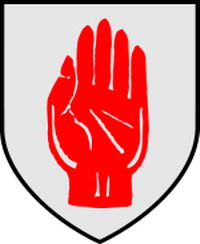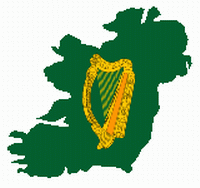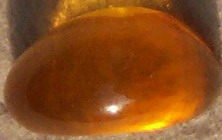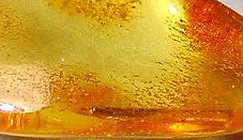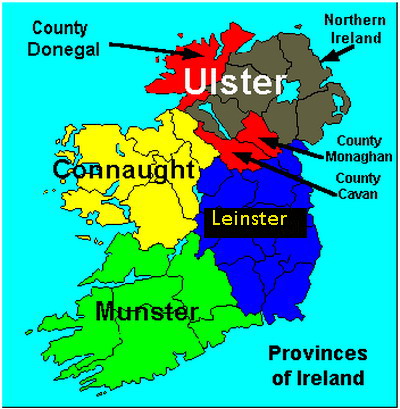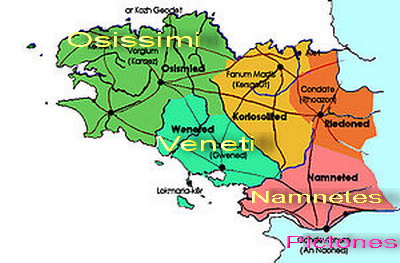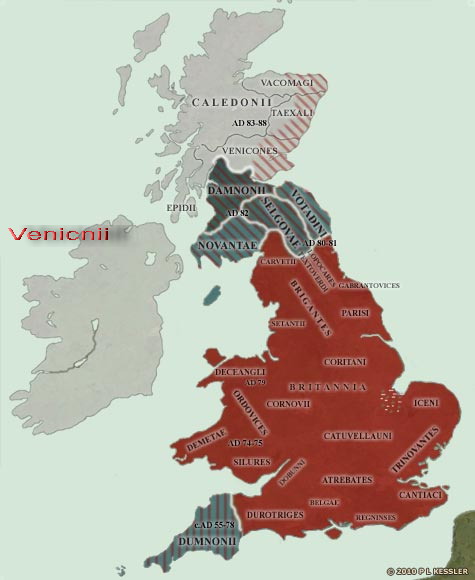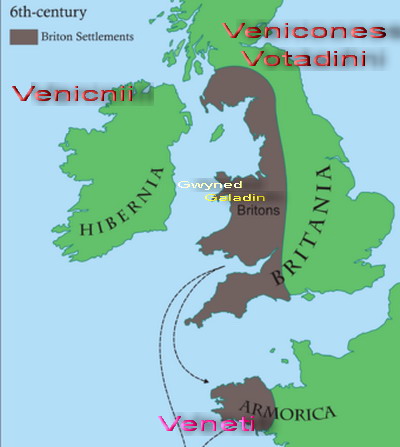|
Details on How To Contribute to Brit-Am http://britam.org/contribute-Brit-Am.html
by Yair Davidiy Contents: World-Wide Asher Vandal-Isation? Veneti and Feni in Gaul and Ireland The Invasions of Ireland. Asher and the Vikings in Ireland. ASHER MEANS HAPPINESS! The Warriors of Asher. The Relative Inter-Tribal Geographical Position of Asher. ASHER AMONGST THE SCOTCH IRISH?
World-Wide Asher Asher was to be found in northern England and Lowland Scotland. We also find the Tribe of Asher amongst the Irish of Eire and Ireland is the domain of Asher. [The predominance of Asher in Ireland was not at first recognized by us. Credit must go to STEPHEN CONEGLAN for drawing our attention to this matter and even then it took a good while before we came to recognize and accept it. That is the way it goes. Research of this nature needs to be prepared to modify findings in the light of new evidence and insights. Alongside much hard work leading to possibly inspired successes may come misunderstandings on some points.] Ireland [Eire] outside of Ulster pertains mainly to the Tribe of Asher.
Ireland is where Asher achieved Tribal predominance. Northern England and
Scotland despite the presence of other Tribes, pertains to the Tribes of Ephraim
and Manasseh, the same as England. A presence of Asher was also known in
Scandinavia and Northern Europe. Some of those few Israelites who remained in
Northern Germany and Poland and later migrated to America were descended from
the Tribe of Asher.
The Tribe of Asher "And the sons of Asher; Jimnah, and Ishuah, and Isui, and Beriah, and Serah their sister" and the sons of Beriah; Heber, and Malchiel" Genesis 46:17. Vandal-Isation? Simplified descriptions of British History usually depict Britain as originally populated by "Celts", who were conquered by Anglo-Saxons, who in turn were conquered by Normans of Scandinavian origin. The actual details are far more complicated. The Normans included many native "Bretons" from Celtic Brittany in France and also many adventurers and mercenaries from various other parts of France were in the Norman forces. The Celts of Britain, according to some authorities, may not have been strictly speaking Celts at all. At all events they were not a homogeneous people but rather very disparate groups culturally and otherwise. Similarly, the Anglo-Saxon invaders actually consisted of numerous Scandinavian and Northern Tribes amongst whom the VANDALS were quite important. The historian Procopius reported that the Vandals had come from the Sea of Azov area just north of the Black Sea by the River Don. Previously, the Vandals in the first century CE had been known as Lygians (Lugians) or Lugii. They had then been located by the Upper Vistula River. They absorbed a Celtic group in the area who had previously had a highly developed "La Tene" type culture. In archaeological terms this region is considered the homeland of the Przeworsk culture with which the Vandals are identified. Lugians, Veneti, and Burgundians were once in this area. The Veneti had also been recalled to the north on the Baltic shores north of the Goths. In addition in western France we find a sea-faring people named Veneti who eventually were to move to Scotland, Wales, and Ireland.
Veneti and Feni in Gaul and Ireland The Veneti were a sea-faring people in Brittany which was also known as Armorica. Their location was in Northwest France across the sea from Devon and Cornwall in southwest Britain. The Veneti show signs of Phoenician culture as recorded F. de Rougemont. "L'Age du Bronze", Paris 1866. They specialized in ocean travel and gave their name to the modern city of Vannes, known locally as Gwened. The Veneti had links with the the British Isles. Other peoples in the Armorica vicinity included the Uenelli or Venelli, the Osismii, Esubii and Namnetes. The Venelli appear to have been a branch of the Veneti. The Namnetes were also known as Samnitae. They derived from Namuel son of Simeon. The name Ostimioi means "the farthest" or "those at the end of the world". Their territory corresponded broadly to the modern French departement of Finisterre, whose name reflects the same meaning in Latin, Finis Terre i.e. end of the earth.
The Esubii worshipped the god Esuvius and considered him their ancestor. The name Esuvius appears to be a form of Esau whose name in Modern Hebrew is pronounced as "Aysav". Esau was the father of Edom. Elements from Edom were to be instrumental in the exile by sea of some of the Ten Tribes of Israel. The Prophet Amos (1:6) had predicted that the Philistine Minoans from Gaza would be involved in delivering Israelite captives to Edom. Amos also said (1:9) that Phoenicians from Tyre would likewise turn Israelites over to Edom. Amos (11:1) had described the ruthlessness of Edom in massacring Israelite captives. Amos (4:2) describes the future exile of part of the Ten Tribes in boats, including large ships named fish-boats (due to their shape) such as were known from Cyprus. [The words translated into English as fishhooks in Hebrew are (1) 'sirot-dugah' meaning more correctly "fish-boats" and (2) tsinot meaning another type of large boat i.e. #.. When He will take you away with fishhooks(1) [sirot-dugah], And your posterity with (2) fishhooks [tsinot]. # They were to be exiled in large ships of two kinds one of which was known as a fish-boat. Part of the Israelites were transported directly by sea to the west. Minoan, Mycenean (i.e. Philistine), and Phoenician proxies working on behalf of Assyria were involved in this transference of population. The Veneti may have been the offshoots of this project. In Gaul, to the south of the Veneti were the Pictones. Like the Veneti the Pictones were also a sea-faring people. They assisted the Romans against the Veneti. Whether or not there existed any kinship between the Picts of Scotland and the Pictones of Gaul is uncertain. Their names are virtually identical. The possibility of a connection is worth bearing in mind since we do find a link between the Veneti and the Picts of Scotland. Edward Dawson has described how after the Veneti were defeated by the Romans under Julius Caesar they moved to Britain. They became the Venicones in Scotland north of the Hadrian Wall. This was the southern area of the Picts. The Picts were known for their navy which they used for raids on Roman Britain. It has been suggested that the Venicones, who were just south of the Picts, deserve part of the credit for the Pictish maritime endeavors. Eventually the Romans defeated and subdued the Venicones. Consequently a portion of them were re-settled in Northwest Wales, in previous Deceangli/Gangani territory. Henceforth this region was known Gwynedd. [The identification of Gwynedd with the Veneti of Gaul is well-known and has been proposed by other scholars as well.] The Votadini who had neighbored the Venicones to the south in Scotland were also resettled in North Wales. They are referred to as Gododdin and in some Welsh sources as Galadin. As for the Venicones, Cunedda and his sons from the Venicones had led the settlement of Gwynedd. #Cunedda evolved into the modern Scottish name Kenneth. # In Ancient Hebrew the name Cuned and Keneth would have been spelled the same way. Kenath was the name of a group of townships associated with Yair (from Hetsron [Chetsron] of Judah) and with Machir of Gilead from Manasseh. 1-Chronicles 2: 21 Now afterward Hezron went in to the daughter of Machir the father of Gilead, whom he married when he was sixty years old; and she bore him Segub. 22 Segub begot Jair, who had twenty-three cities in the land of Gilead. 23 (Geshur and Syria took from them the towns of Jair [i.e. Yair], with Kenath and its towns, sixty towns.) All these belonged to the sons of Machir the father of Gilead. [The neighboring Gododin [i.e. the previously-named Votadini] of North Wales were also known in Welsh Legends as Galadin which is a form of the Hebrew "Gilead". Gilead was a clan of Manasseh.] Either a portion of the Veneti had gone directly to Donegal in Northwest Ireland or Venicones from Wales moved there. They became the Venicnii of Donegal mentioned in the Geography of Ptolemy. John D. McLaughlin shows a connection between the Venicnni of Donegal and the name of Irish groups known as Fenni meaning band or union. [It may be that the appellations Veneti/Venicnii etc derives from a root meaning "white". This is the usual explanation of the name. This does not however prevent the name from having had other additional connotations or acquiring them later.] The Venicones of Donegal are therefore identified with the Irish Feni. John D. McLaughlin suggests a link to the Connachta i.e. the descendants of Conn. These were early rulers (alongside the O'Neils) of much of Ireland. They came from the north and descended from the brothers of Niel. It has been claimed that originally the term Fenni applied only to the Connachta. Later the term was adopted by others. Like the term "Fenni", the name Heber (of Asher) in Hebrew also means "band" or "union". The ancestor of the Connachta and other Gaelic peoples in Irish legend was named Hiber which in Hebrew (where the use of vowels is quite elastic) is an acceptable alternative for Heber.
The Invasions of Ireland. The Island of Ireland may be divided into the northern region (Ulster and its surroundings: Donegal, Cavan, Monaghan), Connaught in the Northwest, Munster in the south and southwest, Leinster in the east and southeast. The historical Ulster area of Northern Ireland in both its Protestant and Catholic sections primarily belongs to the Tribes of Joseph. The other areas were dominated by different groups. We found the Brigantes from Beriah of Asher in North England, in Gaul, in east Switzerland, and in southeast Ireland. Historically the southeast of Ireland had its own independent identity. The east of Ireland was settled by Vikings and later also by Englishmen. The Scandinavian settlers in Ireland derived from Dan and the Aseir of Asher. The Vandal Africans (of Asher) were also in the east of Ireland. The two remaining divisions of Ireland are Connaught in the west and Munster in the southwest. These were ruled over mostly by dynasties related to the Milesians and Neil. The rank and file however were of the same stock as the Picts and other early Scottish and Northern English groups many of whom came from Asher. Many of the subsidiary clans in the rest of Ireland were also from Asher. Irish Mythology says that originally there were the Formorians and Danu. Then came the Blog (Belgae). After the Bolg, the Milesians arrived. The Milesians are also known as Hiberni, Iberi, Gaedhals, Gaelics, Scotts. The traditions of the Milesians stated that they had previously sojourned in Northwest Spain before which they had once been in Egypt at the time when the Israelites were in bondage. The Egyptian sojourn was in addition to their Scythian ancestry. Their forefathers (they said) had once kept the Mosaic Law and their forces had at least included people from the Children of Israel. The leaders of the Milesians in invading Ireland were Heber and Heremon. [The ancestors of the non-Milesian peoples also bore Hebrew sounding names such as Isru, Semuen, Iar, Hiber, and so on.] In honor of Hiber the Milesians are often referred to as Hibernians. We trace Hiber to Heber son of Asher. This was not always so clear to us since in English Transliteration the words deriving from the word for Hebrew and from Heber (of Asher) sound similar. Amongst most groups of Celtic culture the term for Hebrew was what they called themselves and so also in Ireland. The word Hebrew (spelt in Hebrew as Ibri) lends itself when transliterated to several different forms. Hebrew, Iber, Over, Iver, Ivri, Ibri, etc are all acceptable permutations. This word, Iberi (originally meaning Hebrew), was what the early "Celtic" peoples all over Europe but ESPECIALLY in the British isles called themselves! [They gave themselves a name which is a westernized form of the appellation "Hebrew"!] See: Hebrews or Yew Trees?? What Did the Celts Call Themselves?
'The Chronicles of Eri, being the history of the Gaal Sciot Iber, or the Irish People, translated from the Phoenician dialect of the Scythian language', by Roger O' Connor (1822) refers to the Milesians as the Gaali. It says that the Gaali had formerly been in Armenia, and the Caucasus. They were oppressed by the Assyrians and fled via Hamath in northern Syria. The Gaali sailed to Spain which was then ruled by the Phoenicians who in turn were directed from (Assyrian-controlled) Hamath. In Spain the Gaali moved from the southern area of Tartessos to Galatia in the northwest. Together with the Phoenicians from their base in Spain they had established mining operations in Cornwall, in Britain. Some of them moved to Aquitaine in Gaul (France). Due to war and famine, those of the Gaali who were in Spanish Galatia emigrated to Ireland. This account is confirmed by archaeological and historical evidence. Asher and Tarshish The Chronicles of Eri tells us how the Gaali at first were located near
Tartessos of Spain. Tartessos was otherwise known as Tarshish. Ireland and parts
of Britain may also have been included in the concept of Tarshish. The
Gaali were Hebrews from the Ten Tribes. The Stone of the Tribe of Asher in the
Breastplate of the High Priest was also called Tarshish (Midrash Numbers Rabah,
cf. Exodus 28:20). The symbol of Asher was an olive tree and the color of the
Tarshish stone was apparently like that of olive oil. One authority identifies
the Tarshish stone as amber which has often a yellowish color similar to olive
oil. The national color of Ireland is now green which is the color of Simeon who
was also prominent amongst the Irish. Green was not always the national color.
Once it was saffron yellow which is a kind of light orange. In Rabbinical
terminology both yellow and green may be termed "yerek". Green is a mixture of
blue and yellow. It would seem that there is no real reason why green should be
conflated with yellow rather than with blue. Nevertheless this is what happens
in cultural experience. A color blind person sees bright yellow as saffron
orange and does not see green at all. For a color blind person yellow and green
occupy one place on the color scale and are distinguished on the color scale
only by the saffron orange form for yellow. At one stage the early English
rulers of Ireland attempted to forbid the wearing of saffron yellow which
apparently symbolized Irish national uniqueness.
Asher and the Vikings in Ireland. Another infusion from Asher may be traced to the Vikings. The Vikings invaded Ireland and, until being defeated by Brian Boru in the 990s CE, ruled over a good part of it. Many Irish family names here derive from the Vikings e.g. Mac Caifrey, Lamont, Kettle, McAuley, Hammond, Mac Manus, Kitterick, McKeever, Quistan, Reynolds, Sigerson, McSorley, etc. Viking settlements included major townships such as Dublin, Waterford, Wexford, Cork and Limerick. The very name "Ireland" is said to be a Scandinavian form of the original Irish name "Eriu". The Vikings were not entirely adventurers emerging from the general Norwegian and Danish populations. They were also coastal dwellers being pushed out by population pressures and newcomers from the east. Early English historians proposed the Vikings to have been a different people from the mainstream Norwegians who stayed behind. Those who came to Ireland may have been especially derived from the Tribes of Asher and Dan. The presence of the Aseir (from Asher) in ancient Scandinavia was recorded in legend. Mikkel Stjernholm Kragh in an article entitled "Sweden being the Tribe of Asher" under the heading, "Vikings in the Old Testament" points out that the word Viking is derived from the Nordic word vik/vig (vik in Swedish and Norwegian, vig in Danish), which means inlet, creek, because the Vikings sailed out from the inlets and fjords. In the Song of Deborah in the Book of Judges, it is written how the Tribes of Dan and Asher did not join in the war against the enemies of Israel: Why did Dan remain in ships? Asher continued on the sea shore, and abode in his breaches (Judges 5:17). The word rendered 'breaches' in Hebrew is miphratsim, meaning (as Kragh notes) a break (in the shore), or an inlet, in Nordic languages, a vik/vig from which we get the word 'Viking'. VIK is how the Hebrew word Miphrats (inlet) is translated in the Swedish Authorized Version (authorized by Gustav V king of Sweden) of 1917 (Judges 5:17). From "vik" we obtain the word Viking and thus a possible link to the Tribe of Asher. ASHER MEANS HAPPINESS! The name Asher in Hebrew derived from a root connoting happiness. Many of the Irish have an innate natural happy attitude. They are known all over the world for it. The Irish are often smiling. There is even a famous song about it by Chauncey Olcott and George Graff, Jr., in the USA (1912), music by Ernest Ball. When Irish Eyes Are Smiling, sure 'tis like a morn in spring. In the lilt of Irish laughter you can hear the angels sing, When Irish hearts are happy all the world seems bright and gay, And When Irish Eyes Are Smiling, sure, they steal your heart away. There is an expression 'Irish Happiness'. # The Irish have long been known for their happiness, optimism, beauty, etc.. They have always ranked near the top in studies that Gage happiness and overall satisfaction with life. # The Warriors of Asher The Tribe of Asher was destined to produce exceptionally fine warriors. All the Israelites were blessed that they should be brave men. This is one of the characteristics of the Israelite Nation. We find this blessing in: [Deuteronomy 33:29] Happy are you, O Israel! Who is like you, a people saved by the LORD, The shield of your help, And the sword of your majesty! Your enemies shall submit to you, And you shall tread down their high places. The expression "And the sword of your majesty" should be read as saying, AND FOR WHOM THE SWORD IS YOUR PRIDE , i.e. the sword is the source of your Excellency. One of the signs of Israelite descent is proven potential of military prowess against overwhelming odds. This quality is not always evident but it is there. Sometimes it is temporarily dormant. This blessing of military prowess comes at the end of the Blessings of Moses to ALL the Tribes. It is applicable to all of them. Nevertheless, the Tribe of Asher was the last Tribe to be blessed and this particular blessing follows on from the Blessing to Asher. From its placement it may be inferred that in addition to being a general blessing to all Israelites it has a particular significance for Asher. The Irish are a brave people. Irish soldiers served in the British Armed Forces all over the world. At one stage one third of the military forces in the British Empire were of Southern Irish descent. The Northern Irish were often officers while the southern Irish served more in the ranks#. The martial ability of the Irish was legendary. They had a song that said, "For it's always to be seen, The orange and the Green, Going before the thin red line". The "thin red line" were the British Forces in general while the Orange and Green represented the Irish. The highest military decoration amongst the British was the Victoria Cross. Our impression, from looking at the sources, is that Southern Irish soldiers received three to four times as many awards of the Victoria Cross as their proportional representation would have presupposed. This pertains to all the wars of Britain in which Irish soldiers participated. It is also despite certain prejudices against Irish men and non-commissioned ranks that might otherwise have mitigated against receiving the award. The Relative Inter-Tribal Geographical Position of Asher The position of Ireland vis-a vis other Israelite Nations would needs to parallel that of the Israelites Encamped in the Wilderness and their position of Tribal inheritance in the Land of Israel. [This is explained more later.] The Tribe of Asher according to this consideration would need to be in either Ireland, Scotland, or Scandinavia. We found elements from Asher in all these places but Ireland would fit best of all and that is where Asher was predominant. # ED KOCH, former Jewish Mayor of New York City, once told U. S. Cardinal John O'Conner, an American of Irish descent, "The Ten Lost Tribes of Israel, we [Jews] believe, ended up in Ireland" (U. S. News & World Report, March 17, 1987). # ASHER AMONGST THE SCOTCH IRISH? In the Blessing of Moses to the Tribe of Asher it says:
See Also: The Tribe of Asher. Tribal Characteristics in a Nutshell. To see Brit-Am articles concerning Rabbinical Sources and the Tribes of Israel, go to: http://www.britam.org/ContentsSubject.html#Rabbinical To see more Brit-Am articles concerning the Tribes of Israel in general, go to: http://www.britam.org/ContentsSubject.html#Tribes To Make an Offering to Brit-Am! http://www.britam.org/contribute-Brit-Am.html
'It is impossible to rightly govern the world without God or the Bible.' George Washington Brit-Am is the "still small voice" that contains the truth. "after the earthquake a fire, but the LORD was not in the fire; and after the fire a still small voice" [1-Kings 19:12].
| ||||||||||||||||||||||
